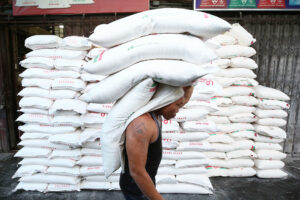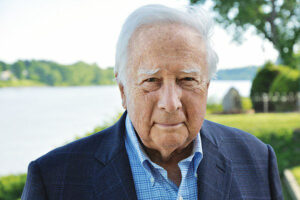China is starting to get serious about stimulus

IF THERE WAS any doubt that shoring up the fragile recovery was the primary domestic concern of Xi Jinping, it ought to have been erased by new and consequential steps to buttress the economy. Nor was symbolism neglected: A jaunt across town to the central bank suggests the president wants every part of the powerful state machinery aligned to meet a growth target once criticized for its lack of ambition.
Shifts in fiscal policy aren’t often riveting stuff, but the changes unveiled by Beijing on Tuesday are significant. By allowing the deficit to exceed the traditional limit of 3% of gross domestic product, China’s legislature green lit a notable boost in spending. Mid-year course-corrections have typically been reserved for calamitous times, such as the peak of the global financial crisis in 2008, the Asian meltdown a decade earlier, and natural disasters. Does that mean lawmakers, who rarely buck the leadership’s desires, believe growth is hanging by a thread? Not quite, according to recent data.
The economy showed signs of bottoming out last quarter. GDP climbed 4.9% from a year earlier, beating forecasts, retail sales jumped and the jobless rate retreated a touch. Officials declared the annual growth target of around 5% to be very doable. Economists concurred, but cautioned that the figures didn’t warrant enormous praise. Remember when the goal, unveiled in March, was derided as a low-ball number? Surely, China ought to do better, went the thinking, considering the lift that was bound to come from ending COVID Zero. Then things began to slide; consumer prices even retreated over the summer, touching off a deflation scare. Notching an expansion of 5% would be a relief. As a way of inspiring confidence, it would fall short. There’s little chance of overheating or inflation staging an unwelcome acceleration.
That’s what gives the legislature’s pump-priming its appeal. “The budget revision represents a meaningful surprise from Beijing,” Citigroup economists wrote in a note. “Policy seems to ride on the activity momentum in order to shore up the weakening confidence… we are not in a ‘good news is bad news’ mode yet.” With luck, China has absorbed a lesson from the US. Fiscal support was perceived to have been unwound too quickly in the years after the subprime lending collapse, leaving ultra-low interest rates to do the hard work and earning the early 2010s the epithet of a jobless recovery.
Speaking of the monetary arena, Xi did the People’s Bank of China (PBoC) a favor by paying his first visit to the authority since becoming president. The central bank isn’t independent like the Federal Reserve or the European Central Bank, so meetings with the head of state aren’t seen as causes of anxiety. There’s no fear that the non-existent autonomy will be trampled or that financial technocrats need to be cajoled into toeing the government line. On the contrary, the pop-in may bolster the PBoC by suggesting it has Xi’s ear and will be elevated in the decision-making hierarchy.
This is a world away from the trepidation in Washington when the Fed chair periodically meets with the president. Is independence about to be compromised? Will the White House encourage or bully, offer succor or hang the Fed chair out to dry? Worse, does the Fed know something bad that we don’t?
Perhaps a better analogy is away from central banking. In 1992, China’s then-paramount leader, Deng Xiaoping, visited the southern province of Guangdong to laud the special economic zones that housed sprawling factories assembling goods for consumption in the West. Deng emphasized economic reform and his tour was credited with helping re-kindle investment after the Tiananmen Square crackdown.
Xi has blessed the PBoC, and the Communist Party — finally — has embraced important fiscal stimulus. This won’t end the fixation with the annual growth target, but it’s a nice start. That 5% looks like it’s in the bag. Mediocrity rarely had it so good.
BLOOMBERG OPINION




